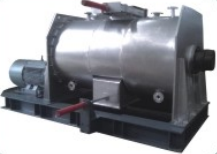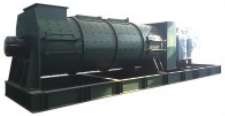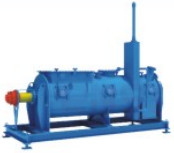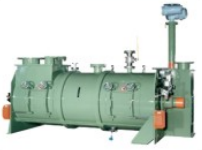Evaluation of powder mixing uniformity
Powder mixing is a common operation in industrial production, which is widely used in the chemical industry, pharmacy, food, and construction. It is one of the most critical operation procedures in the production of medicines, feed, cement, and other products. Powder material mixing refers to the operation process in which a variety of powder particles with different components change their moving speed or direction in the mixer, and finally, make the particles with different components randomly and evenly distributed in the mixer.
The mixing effect directly determines the quality of products, so it is very important to mix powder materials efficiently. Because the movement of powder in the mixing process is very complex, how to correctly evaluate the mixing effect of materials has always been a research hotspot and difficulty in the industry.
This paper summarizes the mixing principle of powder materials, the evaluation methods of mixing uniformity, the factors affecting the evaluation of mixing uniformity, and the main characteristics of various evaluation methods of mixing effect.
1. Mixing principle
In the process of mixing materials, the mixing principle can be divided into convection mixing, shear mixing, and diffusion mixing according to the movement state of powder particles in the mixer. Convection mixing means that under the action of the mixer, solid particles of different components move greatly and mix in the process of flowing back and forth. Shear mixing means that due to the different moving speeds of solid particles of different components, many slip surfaces will be formed in the powder, and relative sliding will occur between the slip surfaces, mixing like thin-layer fluid. Diffusion mixing refers to the local mixing between two adjacent particles in a microscopic state. Due to the change of mutual position between adjacent particles, the powder particles will penetrate and blend with each other. The diffusion mixing process can make the materials reach a completely uniform mixing degree.
In the actual mixing process, the three mixing principles of convection mixing, diffusion mixing, and shear mixing act at the same time. However, it is always dominated by one or several mixing mechanisms, or the mechanisms with different mixing stages and conditions play a leading role. The first stage of powder mixing is generally the convective mixing stage, which is characterized by fast macroscopic mixing speed. The second stage is the combined action stage of convection mixing and shear mixing, at which time the mixing speed of materials slows down. The third stage is the diffusion mixing stage, at which time the mixing uniformity of materials fluctuates up and down at a fixed value, which indicates that the powder particles are in the micro-mixing stage, and the mixing and separation phases of the powder are balanced.
According to the analysis, in the initial mixing stage of the material, the powder particles can be mixed quickly and the mixing speed is faster, but after reaching the best mixing state, the mixing speed will slow down and the mixing effect will change in the opposite direction. At this time, the mixing state of the powder is very disordered, which is called segregation. It can be seen that prolonging the mixing time will not necessarily improve the mixing uniformity of materials but may reduce the mixing effect, so the correct evaluation of the mixing effect and the accurate judgment of the mixing state are very important for the final mixing effect.
2. Mixing effect evaluation
To evaluate the mixing effect of powder materials, scientific methods should be used to quantitatively analyze the mixing effect and accurately judge the mixing uniformity. However, due to the complexity of the mixing process, the actual movement law of particles during the mixing of powder materials cannot be fully grasped at present. The evaluation methods of mixed effect mainly include chemical analysis, tracer method and instrumental analysis method. Among these evaluation methods, the instrumental analysis method is used more and more. The instrumental analysis mainly includes digital image analysis, near-infrared spectroscopy, X-ray spectroscopy, and so on.
3. Factors affecting the evaluation of mixture uniformity
In the analysis process of mixing uniformity of powder materials, the two factors of sampling amount and sampling times have the greatest influence on the determination results.
Sampling quantity is an important factor affecting the detection of mixing uniformity. If the sampling quantity is large and all the mixed materials are sampled and detected, the detection result of mixing uniformity is very accurate. If the sampling amount is very small, when the sample contains only a single particle, the accuracy of mixing uniformity detection will be very poor. Generally speaking, the accuracy of mixture uniformity detection increases with the increase of sampling amount. In general, there are two ways to determine the sampling quantity: (1) it is determined by the strictness of product quality. (2) According to the research purpose and the restriction of sampling methods. In actual production, the sampling quantity should be as close as possible to the final product quantity, and the sampling quantity for each test should be as consistent as possible.
Sampling times are also an important factor affecting the evaluation of the mixing uniformity of powder materials. The more sampling times, the more representative the test results are. When the image processing method is used to study the mixing, the influence of different sampling quantities and sampling times on the detection results of mixing uniformity shows that compared with sampling quantities, sampling times have a greater influence on the accuracy of mixing uniformity. However, in the actual production process, due to the influence of many limiting factors, its value cannot be very large.








